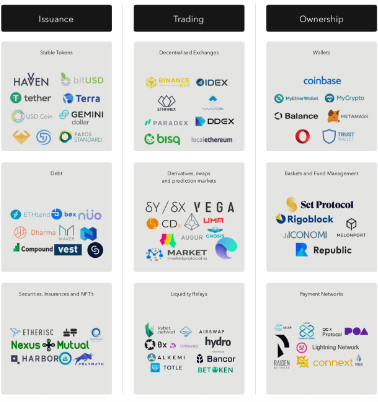To build a cryptocurrency portfolio, various steps are involved, including setting investment goals, assessing risk appetite, picking a varied selection of cryptocurrencies, and continuously monitoring and adjusting the portfolio. It’s also crucial for investors to consider critical factors like market trends, regulatory changes, and security measures while creating and managing their cryptocurrency portfolio.
In crytpo, you do not need a lot of money to get started. You can start with zero and still grow your portfolio to more than 20,000USD in less than 1 year. There are many crypto investors who have done that. However, investing your time is important. So for those, who can’t afford to invest, you can start with crypto airdrops.
Crypto airdrops are a way to engage with blockchain projects in their early stages and getting rewarded in the form of tokens. You can start with interacting with testnets, where you need no money. You can help the company by writing engaging content, graphic designing, creating memes, sharing news on Twitter, participating in Discord etc.
There are a few crypto airdrops you can get started with in 2023. Some of them are: Layerzero airdrop, ZkSync airdrop, Linea airdrop and more.
Understanding Cryptocurrency Portfolios
A collection of cryptocurrencies held by an investor is known as a cryptocurrency portfolio. By diversifying investments across multiple cryptocurrencies, a well-structured portfolio can help manage risk and maximize returns. Understanding the different types of cryptocurrencies, such as stablecoins, utility tokens, and payment tokens, is crucial to creating a balanced portfolio with a mix of low and high-risk investments. Moreover, investors should consider investing in both well-established cryptocurrencies with a proven track record and emerging cryptocurrencies with strong growth potential. Creating an effective cryptocurrency portfolio requires a clear investment strategy, diversification, and regular monitoring to adapt to changing market conditions.
Setting Investment Goals and Risk Tolerance
When creating a cryptocurrency portfolio, it’s crucial to establish investment objectives and evaluate risk tolerance. Investors must consider their financial goals, whether seeking long-term growth or short-term returns, and the level of risk they can handle, as cryptocurrencies carry inherent volatility and risk. Diversification across various cryptocurrencies is essential to reduce the risk of losses, and each cryptocurrency’s potential risks should be evaluated. Investors must remain informed of the latest market trends and regulatory changes to make informed decisions and adjust their portfolio to align with their investment objectives and risk tolerance.
Researching Cryptocurrencies for Inclusion in the Portfolio
Thoroughly researching potential cryptocurrencies is a crucial step in creating a successful cryptocurrency portfolio. Several factors such as the cryptocurrency’s history, performance, market capitalization, technology, and development team should be considered. Assessing the potential for adoption and utility of the cryptocurrency can also help determine its long-term value. It is important to examine the cryptocurrency’s community and social media presence to gauge market sentiment and potential future developments. With extensive research, investors can identify cryptocurrencies with strong growth potential and profitability while minimizing the risk of including cryptocurrencies with lower potential returns.
Diversifying the Portfolio
To reduce risks and increase returns, diversification of the cryptocurrency portfolio is critical. This can be done by holding different cryptocurrencies with various risk levels and market trends to distribute the risk of losses. Established cryptocurrencies such as Bitcoin and Ethereum, as well as newer and emerging cryptocurrencies, can be invested in to achieve diversification. Diversification can also be achieved by investing in various sectors such as payment systems, infrastructure, or decentralized applications. Additionally, investors can consider investing in cryptocurrency funds or exchange-traded funds (ETFs) that provide exposure to multiple cryptocurrencies. However, diversification does not guarantee profits or prevent losses, and investors must still conduct thorough research and remain informed to make informed investment decisions.
Selecting a Cryptocurrency Wallet for the Portfolio
Investors need to select the appropriate cryptocurrency wallet to manage and secure their portfolio. The wallet should be compatible with the cryptocurrencies they hold and offer robust security features. While software wallets provide ease of use, hardware wallets are the most secure option as they store cryptocurrencies offline. Investors should also consider the wallet provider’s reputation, additional features such as the ability to exchange cryptocurrencies, and user-friendliness. A well-chosen wallet can safeguard an investor’s portfolio against theft or loss, guaranteeing the long-term sustainability of their cryptocurrency investments.
Rebalancing and Adjusting the Portfolio
Adjusting and rebalancing a cryptocurrency portfolio is an ongoing process that assists investors in optimizing their returns and mitigating risks. Rapid changes in market conditions and the performance of various cryptocurrencies necessitate regular monitoring of the portfolio to ensure that it aligns with investors’ risk tolerance and investment goals. Rebalancing involves selling high-performing assets and buying low-performing ones to maintain a diversified portfolio. Additionally, investors must adjust their portfolio in response to changes in market trends, security risks, and regulatory developments. Regular portfolio reviews can help investors identify opportunities for growth and minimize potential losses. However, investors should avoid frequent trading or making decisions based on short-term market fluctuations to achieve their long-term investment goals.
Staying Informed and Up-to-Date on Market Trends
Keeping up-to-date with market trends is a crucial part of managing a successful cryptocurrency portfolio. Investors should regularly monitor the performance of their portfolio and the cryptocurrency market to make informed buying and selling decisions. This requires staying informed about industry news, regulatory changes, and market trends. To do this, investors can subscribe to newsletters, follow experts on social media, and participate in online communities. Additionally, tracking market indices and performance metrics can provide valuable insights into the overall health and trends of the market. By staying informed, investors can adapt their strategies to changes in the market and make informed decisions to maximize their returns.
Monitoring Portfolio Performance and Making Changes as Needed
Regularly monitoring the performance of a cryptocurrency portfolio and making adjustments as necessary is crucial for managing risks and maximizing returns. This entails keeping track of the value of various cryptocurrencies and assessing their performance against market trends and investment goals. If the portfolio is underperforming or if market conditions change, investors may need to make modifications, such as buying or selling cryptocurrencies, re-evaluating the portfolio allocation, or diversifying into new cryptocurrencies or sectors. It is also important to remain informed about regulatory developments and security risks that could impact portfolio performance. By monitoring the portfolio and making informed decisions, investors can achieve their investment objectives while minimizing potential risks.







